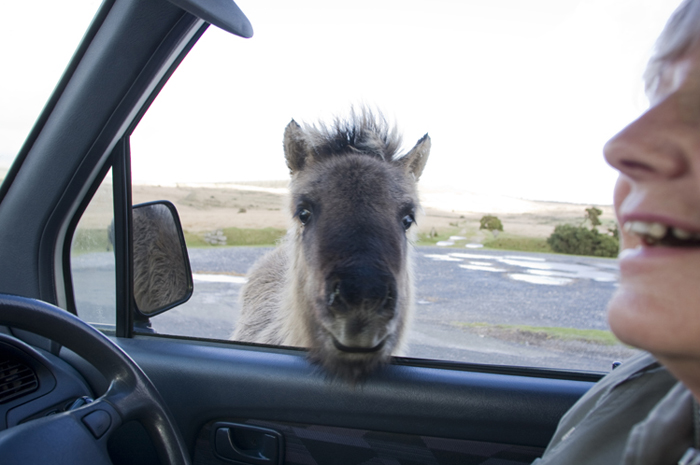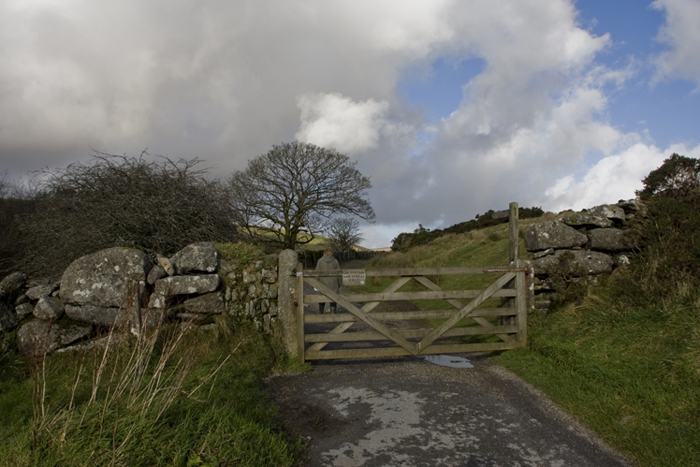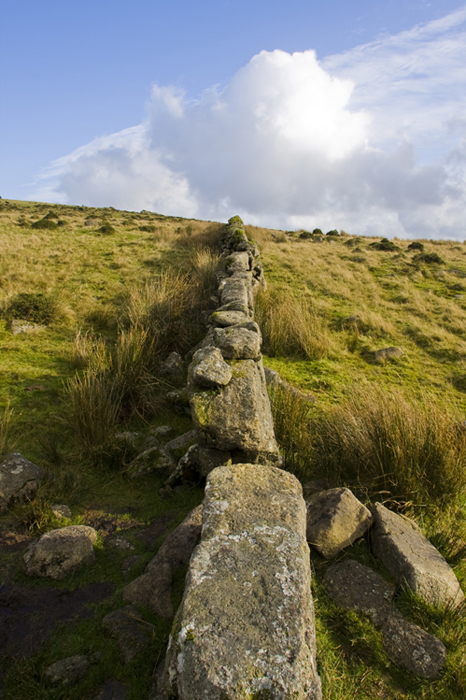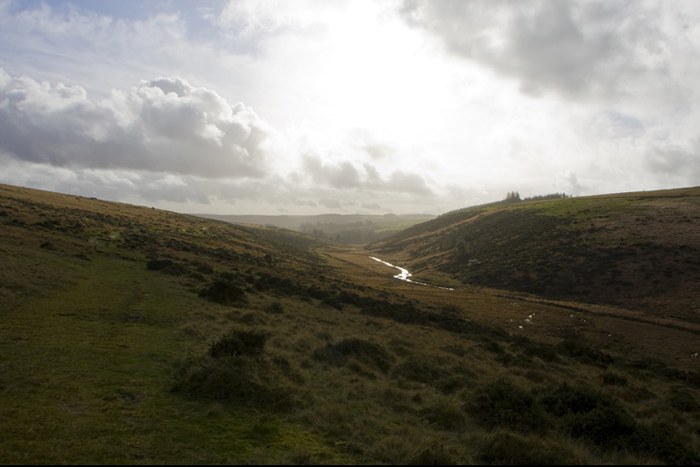Many people have many reasons for visiting Dartmoor, but I think mine were slightly different: To stare at the beautiful scenery till I felt like I was living in Hobbiton, till amazing, sickening cuteness drove me insane. To break in my new Wellies, and to find Sherlock Holmes and his stone hut/home while he searched for the hound of the Baskervilles.
Two out of three ain’t bad.
And oh yes, my mother came with me.
Dartmoor is a circular piece of land on the border of Cornwell and Devon, in the southeast corner of England. It is a strange etheral sort of place, a place different from most other places in England. It looks and -therefore- feels different. While most of the English countryside feels, well tame. Dartmoor feels like a place that is still wild, a place where Americans could still be attacked by werewolves if they strayed from the path after visiting a pub called ‘The Slaughtered Lamb’.
We went in the daytime, so that didn’t happen to us.
I don’t know exactly what it is that gives it this feel, it might be that there are almost no trees, or that it feels vacant, or that it feels somehow abandoned, like a haunted house.
The locals, what of them there are, take advantage of this with full economic weight, as I saw at least one little cottage, selling nick nacks and curios, of faeries on toadstools, of smiling gnomes and books of the hauntings in the area.
My mother and I drove down the small lanes that lead through this protected land. There are only small lanes that lead through this land. It was mid-November quiet, with a bracing 55 degree chill in the air and dark clouds perpetually sitting just on the horizon.
On the way in, we were accosted by some locals, who were standing just beside the road. As we slowed down to take a look, one of them trotted out in front of our car, so we stopped, rolled down the window, and it came over to take a look.
–

–
It was one of the Dartmoor ponies. They’re called ponies, but they’re fully grown, and are just diminutive in stature. They roam all over Dartmoor, eating the grass, and generally blocking traffic, to the delight of tourists, and the annoyance of locals.
Once we arrived in the town of Two Bridges -which is almost exactly in the center of the circle that is Dartmoor- it was not what I was expecting. I had poured over the collection of maps, looking for the correct walk, one that would show off the most of the beautiful landscape, and have ruins of a stone hut or two on the way. I decided a good place to walk was near the town of Two Bridges.
But Two Bridges is not a town, it’s a hotel. There are a few houses scattered about the landscape, but the whole of the place that is called Two Bridges is a hotel. And well, two bridges. Which I found out later, are not the two bridges that gave this place it’s name, they are up the river a bit, and are older, and I never saw them.
It’s a beautiful old hotel, in the classic British sense, giving off the aura of a thatched roof, a front room with wingback chairs and a fire place.
It was straight out of a postcard, and made me slightly queasy in a wow-it’s-another-perfect-British-thatched-roof-white-walled-building. So I didn’t take a picture.
We parked at the small dirt parking lot at the beginning of the trail, put on our wellies and stepped through the gate.
–

–
In the beginning the path is a dirt road for cars, but after a short distance there is a farmhouse -with generator running for electricity- and beyond it is only suitable for humans and ponies.
Dartmoor has been inhabited since the Neolithic Age, (which began some 7000 BCE). In the Bronze Age (2100 BCE-700 BCE) the climate in Dartmoor was warmer than it is now, and the area was covered with trees. As this area became converted to agriculture, the trees were chopped down for grazing and farming and the locals built walls called reaves. I did not see any reaves while walking in Dartmoor.
But I did see more recent signs of development.
About 3000 years ago, (or sometime around the year 1000 BCE, near the end of the Bronze Age) the weather changed on these moors and it became colder and wetter and the moors were mostly abandoned. It wasn’t until the end of the Dark Ages (500, or so, years ago) when people returned. When the people returned they built ‘modern’ stone walls for their farms and livestock.
–

–

–
The hills roll in soft folds, with not a tree in sight, which is an optical illusion as they were sitting in the hollow straight ahead of where I was standing.
–

–
But before the trees, we came across the legendary Hippopotamus that guards the trails in Dartmoor. It is said that if you stray too far from the path, the Hippo, who is innocently named Ian, will gobble you all down. Chomp, Chomp, Chomp.
–

–
Throughout the walk, the clouds raced across the sky. Most of the time hiding the sun and helping the chill wind blow, but every once in a while the sun shone through.
This time the sun shone from behind, looking back on the path we had traveled, with the sun reflecting on the stream, and the invisible town of Two Bridges in the distance.
–

–
P.S. That story about the hippo named Ian, I made up. It’s really the great spectral hound that will eat you up. Crunch, Crunch, Crunch.
